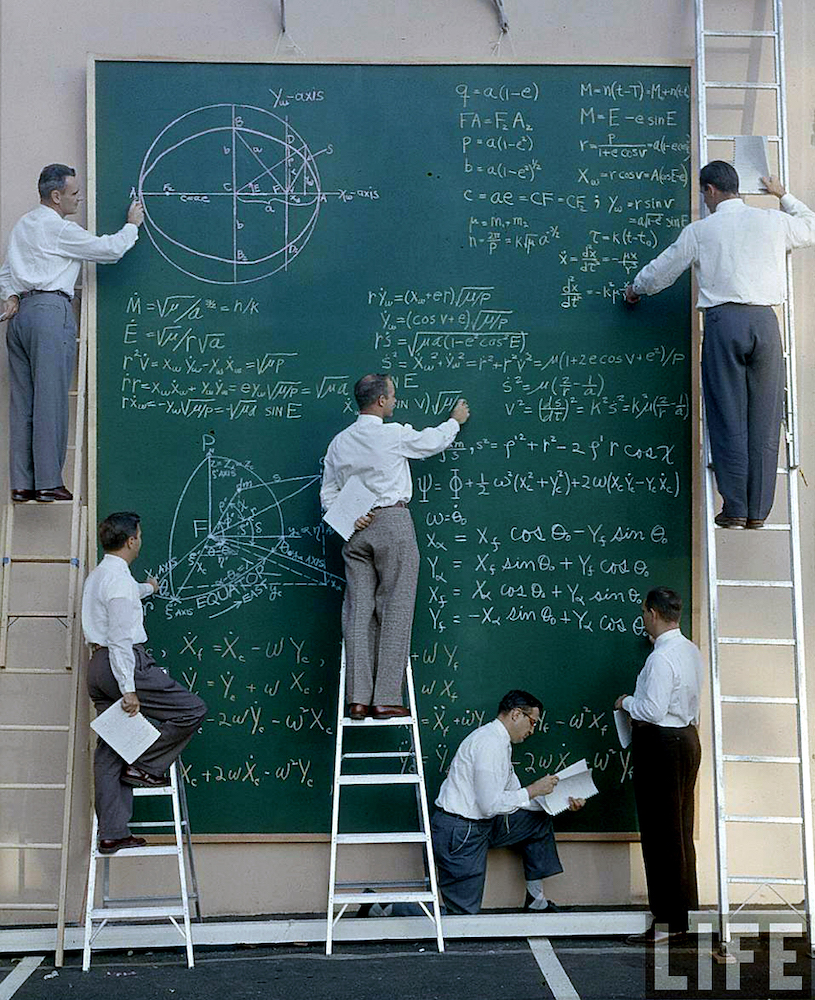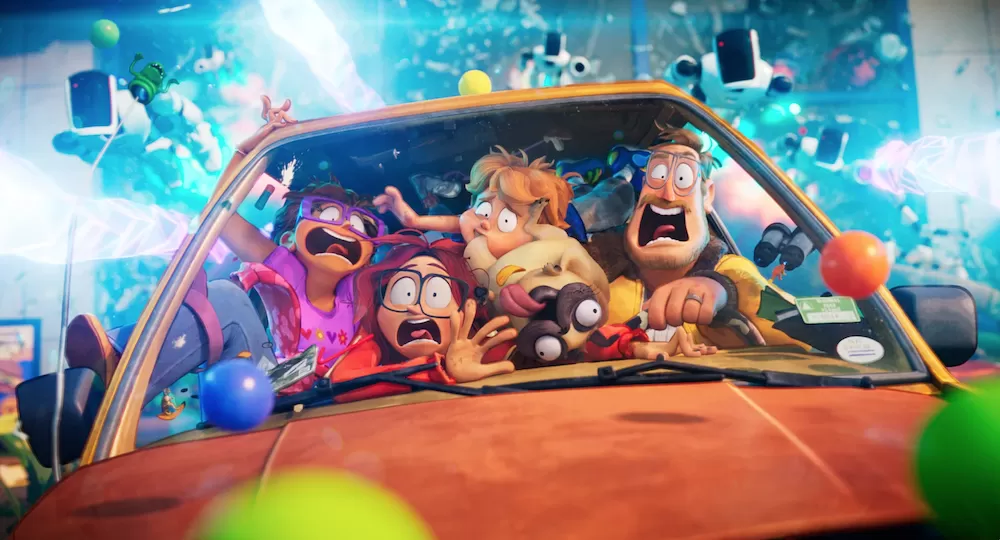Understanding the latest advancements in artificial intelligence (AI) can seem overwhelming, but if it’s learning the basics that you’re interested in, you can boil many AI innovations down to two concepts: machine learning and deep learning. Examples of machine learning and deep learning are everywhere. It’s what makes self-driving cars a reality, how Netflix knows which show you’ll want to watch next and how Facebook recognises whose face is in a photo.
Machine learning and deep learning often seem like interchangeable buzzwords, but there are differences between them. So, what exactly are these two concepts that dominate conversations about AI and how are they different?
Deep learning vs. machine learning
The first step in understanding the difference between machine learning and deep learning is to recognise that deep learning is machine learning.
More specifically, deep learning is considered an evolution of machine learning. It uses a programmable neural network that enables machines to make accurate decisions without help from humans.
But for starters, let’s first define machine learning.
What is machine learning?
Machine learning definition: An application of artificial intelligence that includes algorithms that parse data, learn from that data and then apply what they’ve learned to make informed decisions.
How does machine learning work?
An easy example of a machine learning algorithm is an on-demand music streaming service. For the service to make a decision about which new songs or artists to recommend to a listener, machine learning algorithms associate the listener’s preferences with other listeners who have similar musical tastes. This technique, which is often simply touted as AI, is used in many services that offer automated recommendations.
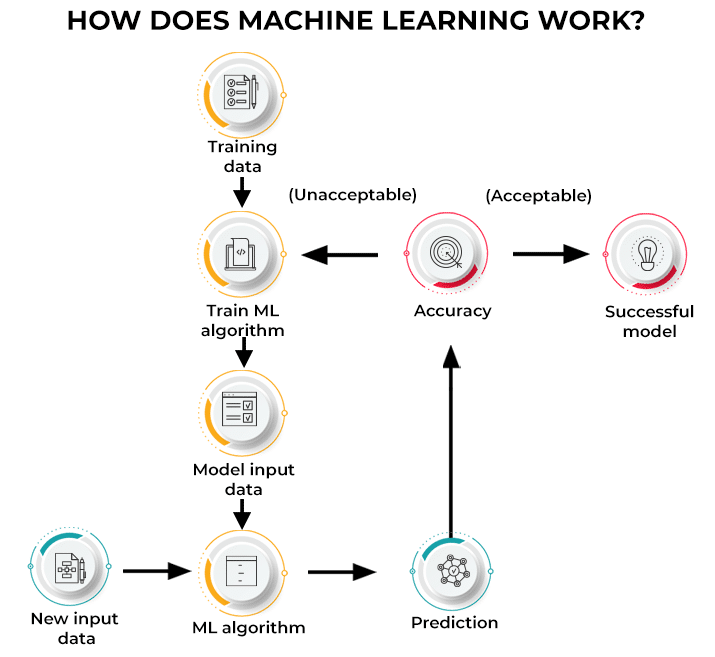
Machine learning involves a lot of complex maths and coding that, at the end of the day, serves the same mechanical function as a torch, car or computer screen. When we say something is capable of ‘machine learning’, this means it performs a function with the data given to it and gradually improves over time. It’s like if you had a torch that turned on whenever you said “it’s dark”, it would recognise different phrases containing the word “dark”.
Machine learning fuels all sorts of automated tasks that span across multiple industries, from data security firms that hunt down malware to finance professionals who want alerts for favourable trades. The AI algorithms are programmed to constantly learn in a way that simulates a virtual personal assistant – something that they do quite well.
The way machines can learn new tricks gets interesting (and exciting) when we start talking about deep learning and deep neural networks.
What is deep learning?
Deep learning definition: A subfield of machine learning that structures algorithms in layers to create an ‘artificial neural network’ that can learn and make intelligent decisions on its own.
How does deep learning work?
A deep learning model is designed to continually analyse data with a logical structure similar to how a human would conclude. To complete this analysis, deep learning applications use a layered structure of algorithms called an artificial neural network. The design of an artificial neural network is inspired by the biological network of neurons in the human brain, leading to a learning system that’s far more capable than that of standard machine learning models.
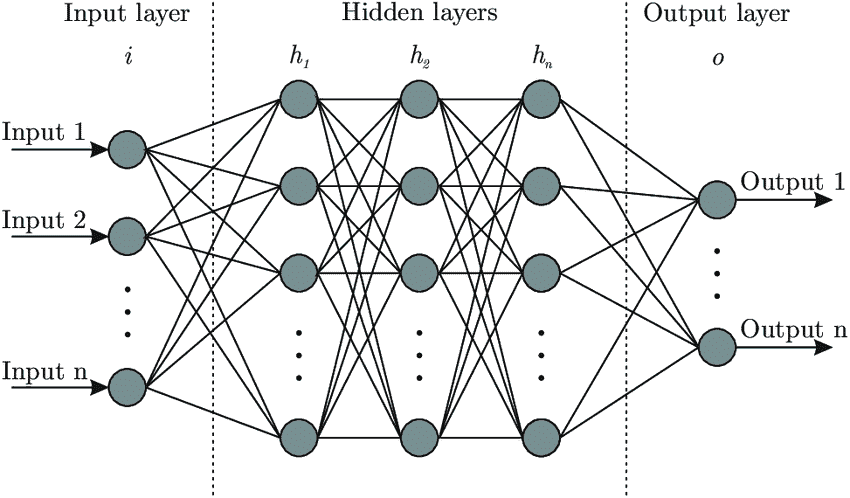
It’s a tricky prospect to ensure that a deep learning model doesn’t draw incorrect conclusions – like other examples of AI, it requires lots of training to get the learning processes correct. But when it works as it’s intended, functional deep learning is often received as a scientific marvel that many consider to be the backbone of true artificial intelligence.
A strong example of deep learning is Google’s AlphaGo. Google created a computer program with its neural network that learned to play the abstract board game Go, which is known for requiring sharp intellect and intuition. By playing against professional Go players, AlphaGo’s deep learning model learned how to play at a level never seen before in AI and did so without being told when it should make a specific move (as a standard machine learning model would require).
It caused quite a stir when AlphaGo defeated multiple world-renowned ‘masters’ of the game – not only could a machine grasp the complex techniques and abstract aspects of the game, but it was also becoming one of the greatest players. It was a battle between human intelligence and artificial intelligence, and the latter came out on top.
For more practical use cases, imagine an image recognition app that can identify a type of flower or species of bird based on a photo. That image classification is powered by a deep neural network. Deep learning also guides speech recognition and translation and drives self-driving cars.
The difference between machine learning and deep learning
In practical terms, deep learning is just a subset of machine learning. Deep learning is machine learning and functions in a similar way (hence why the terms are sometimes loosely interchanged). However, its capabilities are different.
While basic machine learning models do gradually get better at performing their specific functions as they take in new data, they still need some human intervention. If an AI algorithm returns an inaccurate prediction, then an engineer has to step in and make adjustments. With a deep learning model, an algorithm can determine whether or not a prediction is accurate through its neural network – no human help (interference) is required.
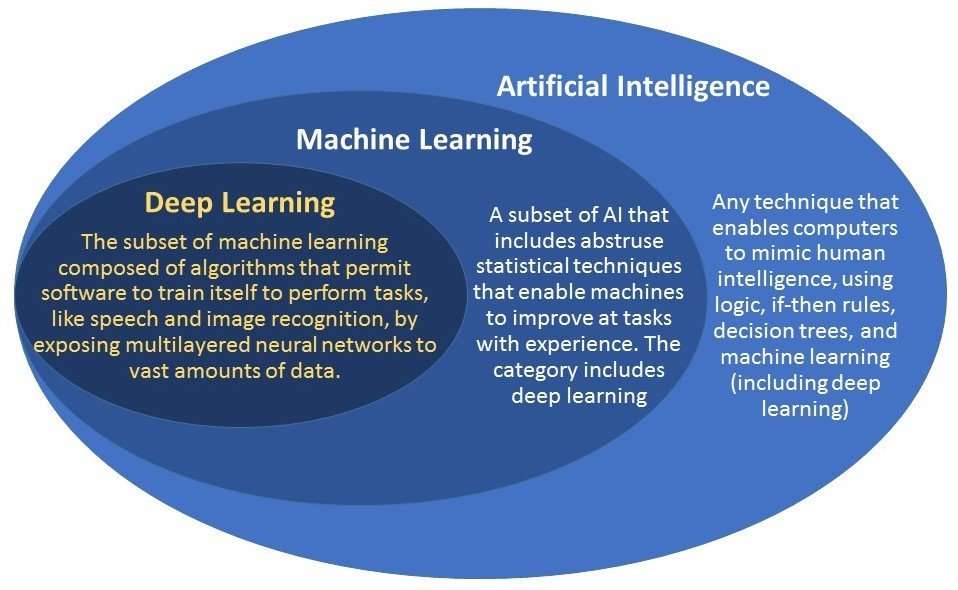
Let’s go back to the torch example: it could be programmed to turn on when it recognises the audible cue of someone saying the word “dark”. As it continues learning, it might eventually perform that task when it hears any phrase containing that particular word. But if the torch had a deep learning model, it could figure out that it should turn on with the cues “I can’t see” or “the light switch won’t work”, perhaps in tandem with a light sensor.
A deep learning model can learn through its method of computing – a technique that makes it seem like it has its brain.
To recap, the key differences between machine learning and deep learning are:
- Machine learning uses algorithms to parse data, learn from that data and make informed decisions based on what it has learned.
- Deep learning structures algorithms in layers to create an ‘artificial neural network’ that can learn and make intelligent decisions on its own.
- Deep learning is a subset of machine learning. While both fall under the broad category of artificial intelligence, deep learning is what powers the most human-like AI.
What are the different types of machine learning?
To dive a bit deeper into the weeds, let’s look at the three main types of machine learning and how they differ from one another.
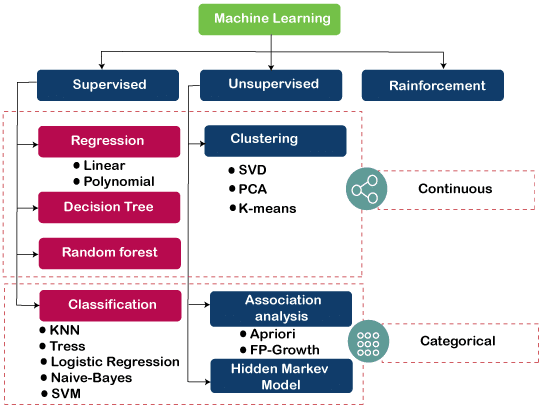
1. Supervised learning
As you might have guessed from the name, this subset of machine learning requires the most supervision. A computer is given training data and a model for responding to data.
As new data is fed to the computer, a data scientist ‘supervises’ the process by confirming the computer’s accurate responses and correcting the computer’s inaccurate responses.
For example, imagine a programmer is trying to ‘teach’ a computer how to tell the difference between dogs and cats. They would feed the computer model a set of labelled data; in this case, pictures of cats and dogs that are identified. Over time, the model would start recognising patterns – like that cats have long whiskers or that dogs can smile. Then, the programmer would start feeding the computer unlabelled data (unidentified photos) and test the model on its ability to accurately identify dogs and cats. Google’s definition of supervised learning.
2. Unsupervised learning
Supervised learning involves giving the model all the ‘correct answers’ (labelled data) as a way of teaching it how to identify unlabelled data. It’s like telling someone to read through a bird guide and then using flashcards to test if they’ve learned how to identify different species on their own.
By contrast, unsupervised learning entails feeding the computer only unlabelled data and then letting the model identify the patterns on its own. This machine learning method is usually used in cases where it’s unclear what the results will look like, so you need the computer to dig through the hidden layers of data and cluster (or group) data together based on similarities or differences.
For example, say your business wants to analyse data to identify customer segments. But you don’t know what segments exist yet. You’ll have to feed the unlabelled input data into the unsupervised learning model so it can act as its classifier of customer segments. Google’s definition of unsupervised learning.
3. Reinforcement learning
The reinforcement learning method is a trial-and-error approach that allows a model to learn using feedback from its actions. The computer receives ‘positive feedback’ when it correctly understands or classifies data and ‘negative feedback’ when it fails. By ‘rewarding’ good behaviour and ‘punishing’ bad behaviour, this learning method reinforces the former. (It differentiates reinforcement learning from supervised learning, in which a data scientist simply confirms or corrects the model rather than rewarding or punishing it.)
Reinforcement learning is used to help machines master complex tasks that come with massive datasets, such as driving a car. Through lots of trial and error, the program learns how to make a series of decisions, which is necessary for many multi-step processes. The University of York’s definition of reinforced learning.
What are the different types of deep-learning algorithms?
Machine learning can enable computers to achieve remarkable tasks, but they still fall short of replicating human intelligence. Deep neural networks, on the other hand, are modelled on the human brain, representing an even more sophisticated level of artificial intelligence.
There are several different types of deep-learning algorithms. We’ll examine the most popular models.
Convolutional neural networks
Convolutional neural networks (CNNs) are algorithms specifically designed for image processing and object detection. The ‘convolution’ is a unique process of filtering through an image to assess every element within it.
CNNs are often used to power computer vision, a field of AI that teaches machines how to process the visual world. Facial recognition technology is a common use of computer vision.
Recurrent neural networks
Recurrent neural networks (RNNs) have built-in feedback loops that allow the algorithms to ‘remember’ past data points. RNNs can use this memory of past events to inform their understanding of current events or even predict the future.
A deep neural network can ‘think’ better when it has this level of context. For example, a maps app powered by an RNN can ‘remember’ when traffic tends to get worse. It can then use this knowledge to recommend an alternate route when you’re about to get caught in rush hour traffic.
Data as the fuel of the future
With the massive amount of new data being produced by the current ‘Big Data Era’, we’re bound to see innovations that we can’t even imagine yet. According to data science experts, some of these breakthroughs will likely be deep learning applications.
Andrew Ng, former chief scientist of China’s major search engine Baidu and one of the leaders of the Google Brain Project, shared a great analogy for deep learning models with Wired:
“I think AI is akin to building a rocket ship – you need a huge engine and a lot of fuel”, he told Wired journalist Caleb Garling. “If you have a large engine and a tiny amount of fuel, you won’t make it to orbit. If you have a tiny engine and a tonne of fuel, you can’t even lift off. To build a rocket, you need a huge engine and a lot of fuel. The analogy to deep learning is that the rocket engine is the deep learning model and the fuel is the huge amounts of data we can feed to these algorithms.”
What machine learning and deep learning mean for customer hyper-personalisation
Many of today’s AI applications in customer service utilise machine learning algorithms. They’re used to drive individualisation of product selection for autonomous communication with each consumer, which increases relevancy to that customer, which in turn benefits profitability and a huge drop off in returned goods.
The data fed into those algorithms comes from a constant flux of incoming customer queries, including relevant context into the issues that buyers are facing. Not only what and how long they look at a product is captured, but the route thereto as well. This identifies and nurtures whatever process is unique to that individual being repeated to maximum effect.
Aggregating all that information into an AI application, in turn, leads to quicker and more accurate predictions. This has made artificial intelligence an exciting prospect for many businesses, with industry leaders speculating that the most practical use cases for business-related AI will be for customer relevancy and the lesser appreciated but equally relevant cognitive dissonance.
For example, machine learning and deep learning are both used to power natural language processing (NLP), a branch of computer science that allows computers to comprehend text and speech. In the CX world, Amazon Alexa and Apple’s Siri are two good examples of ‘virtual agents’ that can use speech recognition to answer a consumer’s questions.


